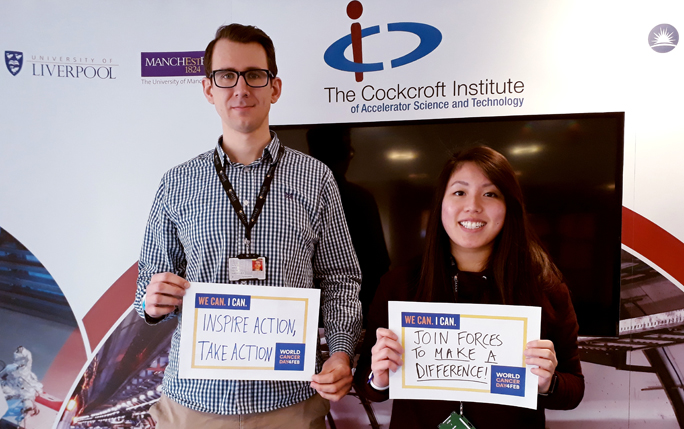QUASARs accelerating the fight against cancer

 4th February marks the World Cancer Day that takes place every year to raise awareness of cancer and to encourage its prevention, detection, and treatment. According to the official website http://www.worldcancerday.org nearly 8 million people will die of cancer this year alone. This number of deaths will increase to 13.2 million per year by 2030. Therefore, cancer is a major social problem and has to be addressed. Within the QUASAR Group, large-scale research projects are carried out by several members to maximize the healthcare benefits from cancer therapies.
4th February marks the World Cancer Day that takes place every year to raise awareness of cancer and to encourage its prevention, detection, and treatment. According to the official website http://www.worldcancerday.org nearly 8 million people will die of cancer this year alone. This number of deaths will increase to 13.2 million per year by 2030. Therefore, cancer is a major social problem and has to be addressed. Within the QUASAR Group, large-scale research projects are carried out by several members to maximize the healthcare benefits from cancer therapies.
QUASAR Group leader Prof Carsten Welsch is the director of two training networks OMA and LIV.DAT that address current problems in cancer research. The European Training Network Optimization of Medical Accelerators (OMA) joins universities, research centers and ion beam treatment facilities with industry partners. The extensive research and development program includes treatment facility design and optimization, numerical simulations for the development of advanced treatment schemes, and in beam imaging and treatment monitoring to optimize the use of particle beams. Protons have unique physical and radiobiological properties, and so proton beam therapy offers advantages for specific cancer types. In particular, they can be shaped as narrow, focused beams that accurately target the tumour with minimal damage to healthy tissue.
Jacinta Yap is the OMA Fellow in the QUASAR Group and is based at the Cockcroft Institute, UK. Her project with the Optimisation of Medical Accelerators network is looking at both beam diagnostics and radiobiology. She will look into Halo-Dose correlation studies in a medical accelerator for online beam monitoring in medical accelerators and related studies into low dose effects, cell damage, radiobiological simulations and models.
Together with QUASAR Group member Roland Schnuerer, they investigate the stand alone VELO detector as an online monitor through obtaining treatment beam halo maps at the Clatterbridge Cancer Centre (CCC). The characterisation and understanding of the beam halo is an important consideration in treatment plans, verification and quality assurance.
The network Liverpool Big Data Science (LIV.DAT) Centre for Doctoral Training (CDT) is a hub for training students in managing, analysing and interpreting large, complex datasets and high rates of data flow. The CDT promises a unique training approach addressing some of the biggest challenges in data intensive science to tackle a growing skills gap. The projects involve Monte Carlo studies, Deep Learning and HPC, as well as Data Analysis.

QUASAR Selina studies proton beam cancer therapy in LIV.DAT.
Selina Dhinsey joined LIV.DAT as a QUASAR member and her research includes modelling proton therapy for the treatment of cancer using Monte Carlo methods. There is increasing evidence that protons, depending on their energy and the position of cell radiation relative to the Bragg peak, induce a different range of DNA damage compared to x-rays. There is also evidence suggesting that this variety of proton-induced DNA damage can lead to an alternative cellular DNA damage response compared to that caused by x-ray-induced DNA damage, mediated by different DNA damage signalling and repair pathways. Molecular and cellular biological studies and techniques will be combined with MC simulation of beam-cell interaction over a range of energies (up to 60 MeV) to improve our understanding of the radiobiology of proton beam therapy.
Together with hundreds of other research institutes, hospitals and foundations, we join the support to enhance cancer treatments. WE CAN accelerate the fight against cancer.